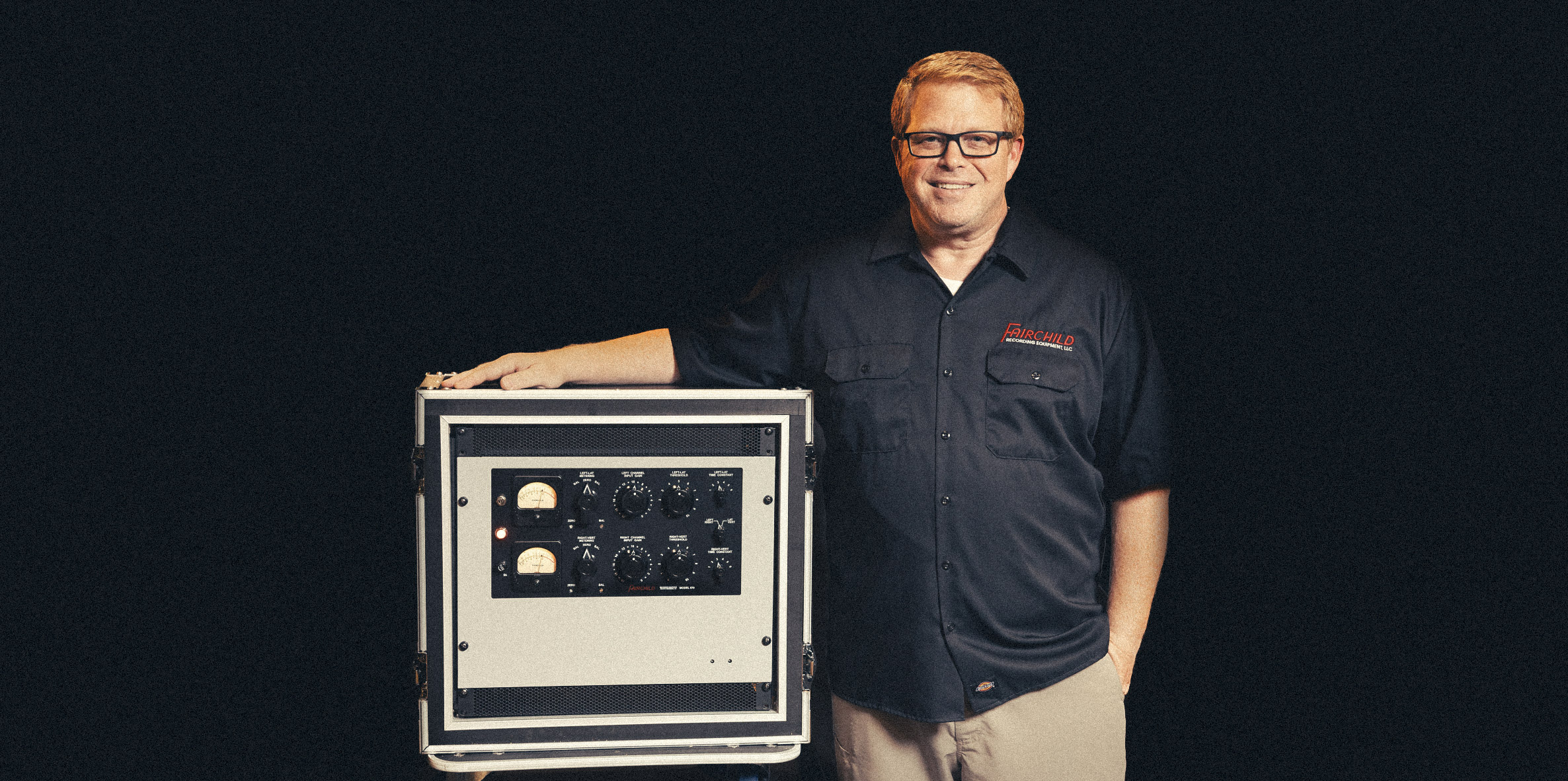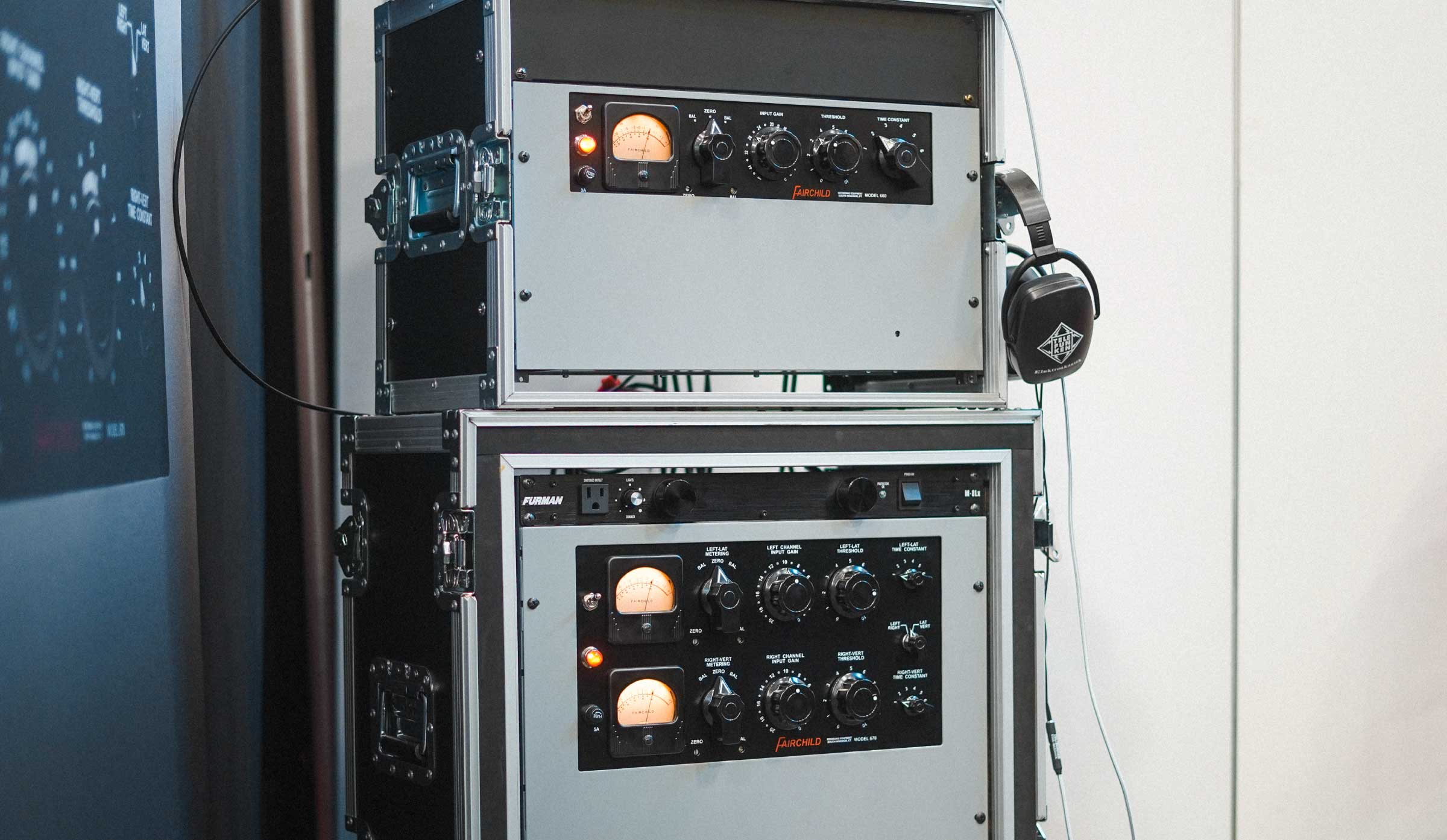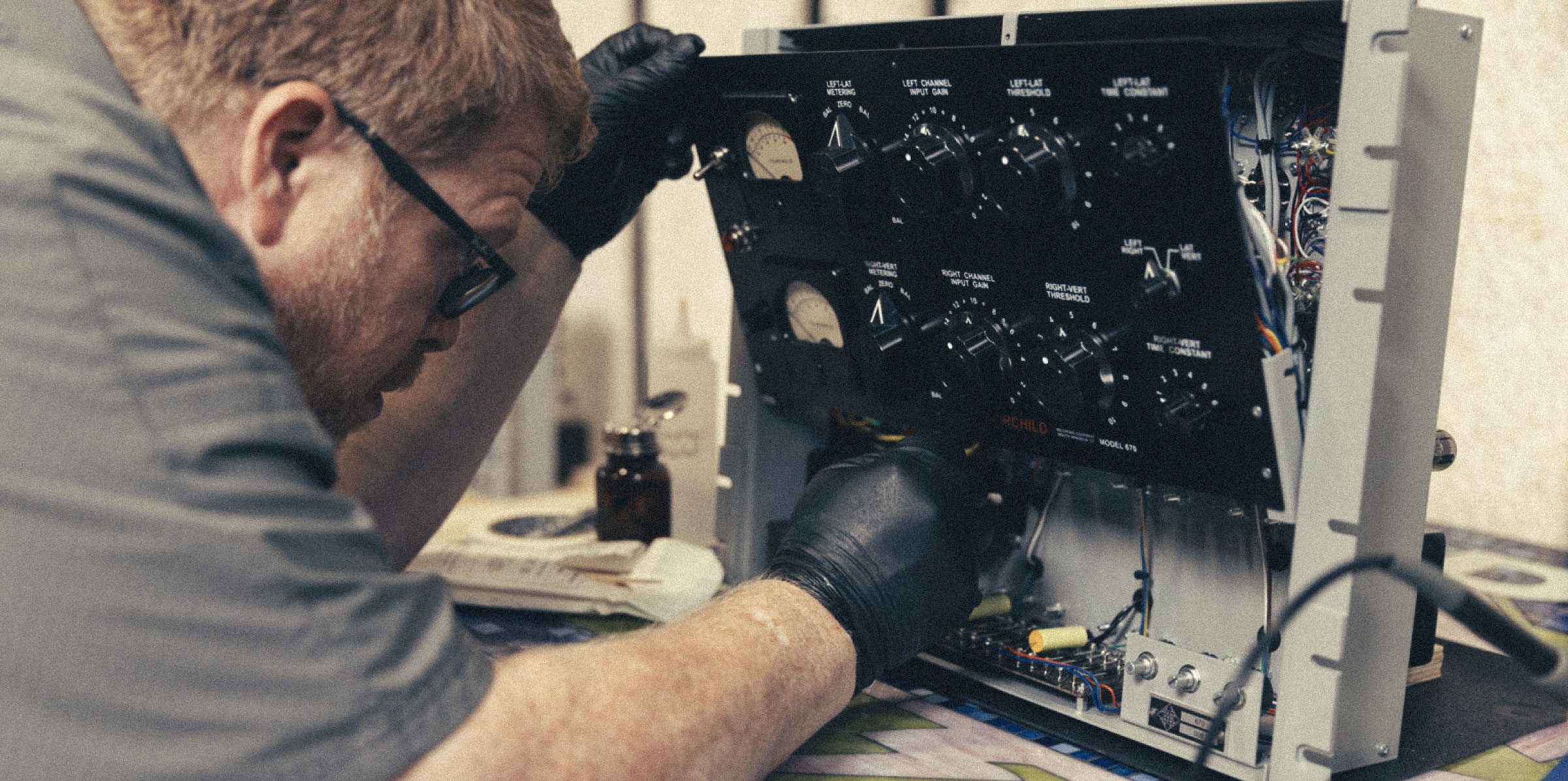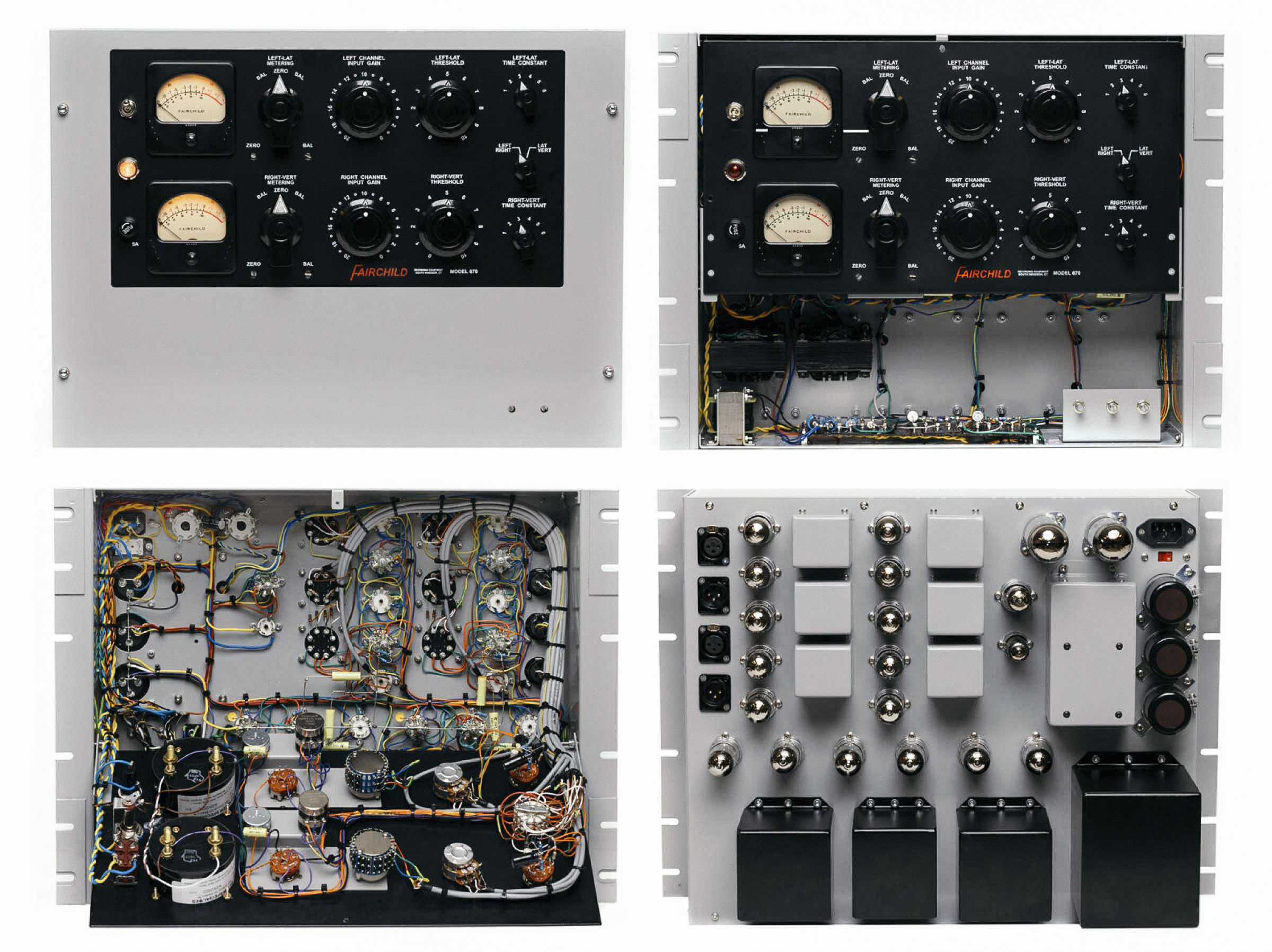
Reviving a Legend
Toni Fishman, founder and CEO of microphone designer/manufacturer TELEFUNKEN Elektroakustik, is the man behind the revival of arguably the most revered name in pro audio: Fairchild. After an extensive five-year period of research and development, as well as rigorous precision testing, Fishman has successfully reintroduced the highly sought-after Fairchild 670 vacuum tube compressor, available now in very limited quantities. Fishman’s new model utilizes the same tubes and custom-wound transformers, and adheres strictly to the original specifications. The attention to detail is evident in its architecture, point-to-point soldering, and turret-style construction. It’s the only truly faithful reproduction of Rein Narma’s original 670 design, created at the request of recording pioneer Les Paul back in 1959. Featuring a dual-channel design and unique compression qualities, the Fairchild 670 can infuse warmth, depth, and character into almost any audio signal. Vacuum tube technology delivers a natural and organic quality to the compressed signal, ensuring that distinctive classic analogue sound in both digital and analogue productions.
We sat down with Toni to discover exactly what goes into reviving such a legendary piece of gear…

I guess we should start at the beginning! Could you provide a little background to yourself and your experience within the industry.
I have always been passionate about music and recording. I grew up in Connecticut and sometime in the late 90’s I set out to make some microphone parts to help repair a massive collection of vintage microphones I purchased from Warner Bros’ Loft Studio in Nashville. It led me to reestablishing the Telefunken trademark in the United States in 2001, and then In 2009 I entered into a partner alliance with Telefunken licenses, GMBH. They recognized my passion and love for the brand and created a trade license and brand use agreement for professional audio and vacuum tubes.
Was it a similar origin story for Fairchild? Or was this something that had been brewing for a while?
Well for the past 24 years, I have been building Telefunken microphones in South Windsor, Connecticut, in a building that once belonged to my father. He was my biggest inspiration and supporter but unfortunately passed away in 2021 after a lengthy battle with Parkinson’s.
Reverse engineering classic microphones really started with only a small team of friends who believed in my ability and dream. Much of my due diligence with the Telefunken brand gave me a good grounding and understanding around US patent trademark laws, which was obviously very useful, and between scouting around and working within the industry I had become gradually aware of other legendary brands that had been abandoned.
My favourite pieces of gear have always been the ELA M 251 microphone and the Fairchild 660 and 670 compressors. These pieces of equipment fascinated me, and I wanted to build them for myself. I adopted a ‘no compromise’ approach that respected the original designs entirely and kept its structural integrity & design architecture unchanged.
Then in early 2016, I had a “eureka” moment. I realized that Fairchild semiconductor was bought out by ON semi, and that no one was using the Fairchild name for analogue circuits. I worked with my intellectual property attorney, and carefully waited and plotted a course to change that. I honestly doubted anything would come of it. To complicate matters further, I found out that Avid had a registration for their ‘Bomb Factory’ plug-in. I was told by one of my attorneys that I would never be able to use the Fairchild name, so in an act of desperation, I decided to call Avid. I asked them directly if they would mind coexisting with a company that only built analogue circuits, and to my surprise, they were up for it! Originally, the Fairchild project started under the name Telefunken, and It was not until that conversation with Ed Gray and Greg Chin from Avid that I realized it would be possible to use the Fairchild name. Soon after I founded a Connecticut LLC, Fairchild Recording Equipment.


What it was like to go through the research and development for the Fairchild. How big was the team behind the operation and what did the process entail?
Well, I have always been good at collecting parts and sourcing hard to find gear. I searched for a long time to find transformers from original Fairchilds and managed to acquire a parts collection from a friend that was building his version of a 670 called the ADL670. Much of this process was similar in how I went about reverse engineering classic microphones earlier in my career.
Sourcing the tubes and re-creating the transformers was undoubtedly the biggest challenge of the project, but it was obviously a vital part of the puzzle that we needed to get right to ensure te accuracy and authenticity to the original Fairchild. It was a time-consuming process – these units are all built by hand by the same three people, and all tested in-house by Telefunken engineers.

What makes this recreation unique compared to the many clones available? What is it about the real deal that sets it apart from others?
It comes down to the attention to detail. The new Fairchild 660 and 670 are all point-to-point construction, all use the same carefully selected tubes & architecture layout and identical turret style construction as a vintage original. Even the chassis thickness is made to the original specification. We are the only company that does it this way. We also implemented some basic improvements from the original design, such as adding XLR connectors, ruggedizing the design slightly by adding more mechanical fasteners to transformers with through-hole grommets and extra anchor points, for longevity sake.
How would you describe its sound? Any particular applications that you or owners find they love using it on?
Simply put, the sound is the best I’ve heard from any piece of equipment delivered in my 25 years experience in the industry. My goosebumps get goosebumps!
This is an exciting new venture. What does the future of Fairchild look like? Do you see yourself growing the brand in the same way you have with Telefunken or is this very much a passion project centred around the iconic pieces for now?
The future is exciting. I hope that we can dive deep into Fairchild’s rich and often overshadowed catalogue of products – for example reverb units, and maybe collaborate with Avid on a future plug-in…
Thank you Toni!
